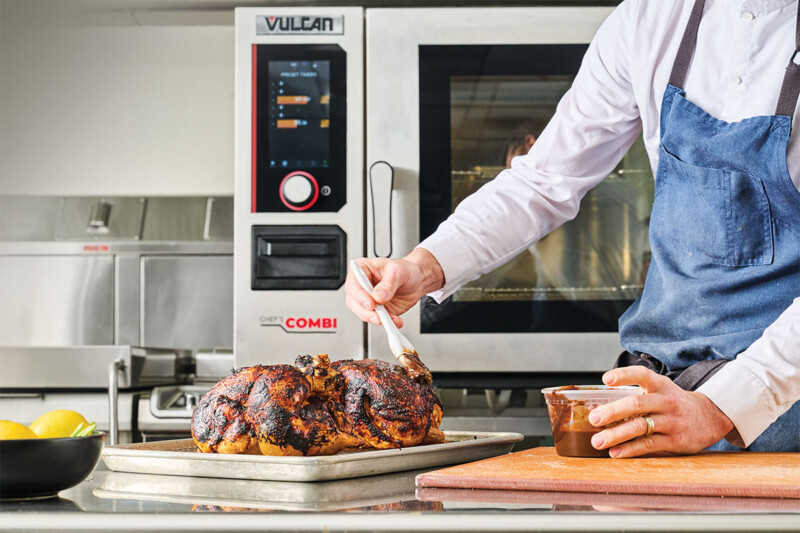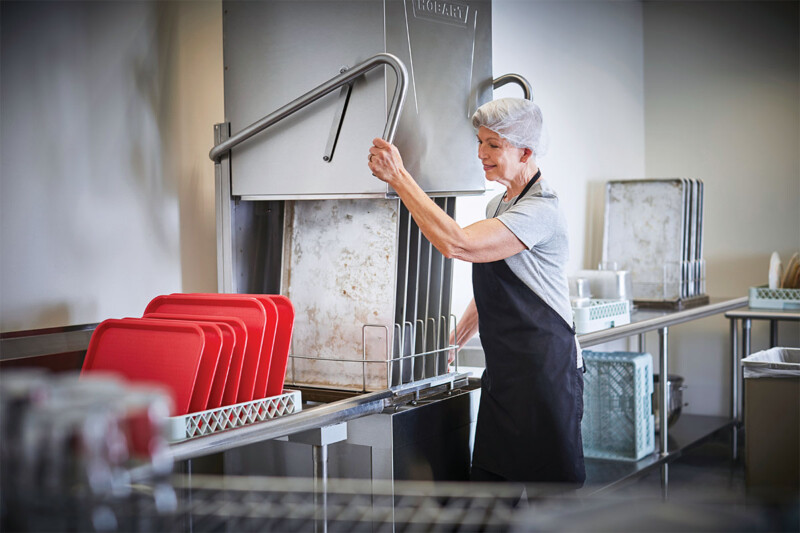What to Consider When Selecting a Rack-Conveyor Warewasher
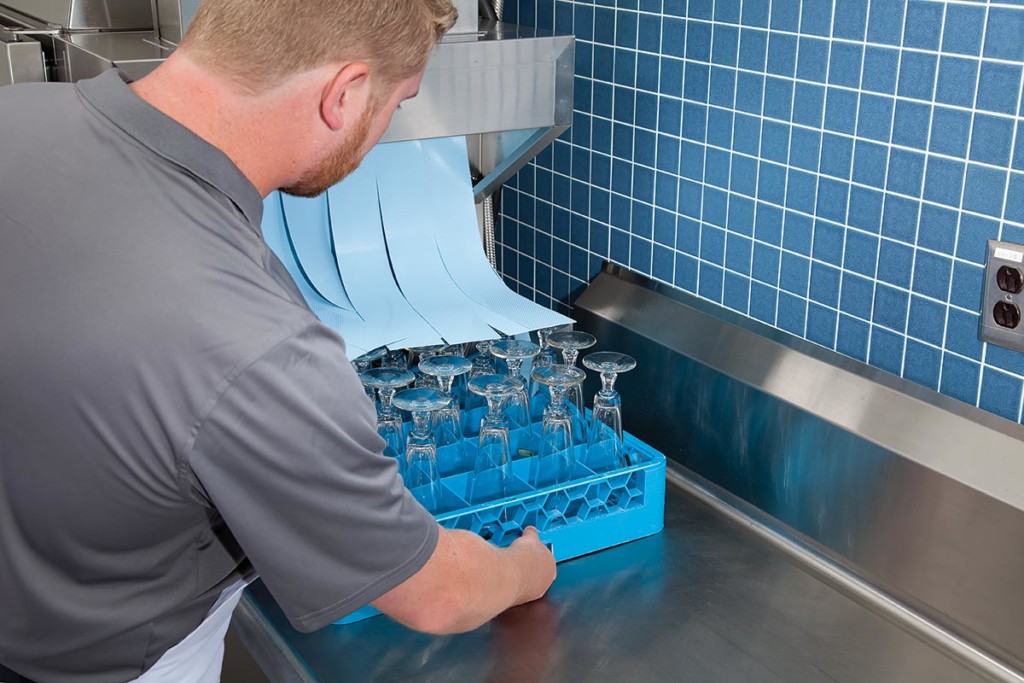
While small operations may get by with undercounter warewashers and very large operations might require flight-type machines, medium-size establishments will find that a rack-conveyor warewasher that cleans upward of 200 or more racks per hour often is just right to keep up with output and save labor costs.
Whether installing a rack-conveyor machine into a new kitchen or upgrading from a dishwasher that is just not cutting it anymore, make sure you’re weighing all the latest developments designed to improve efficiency and ease of use.
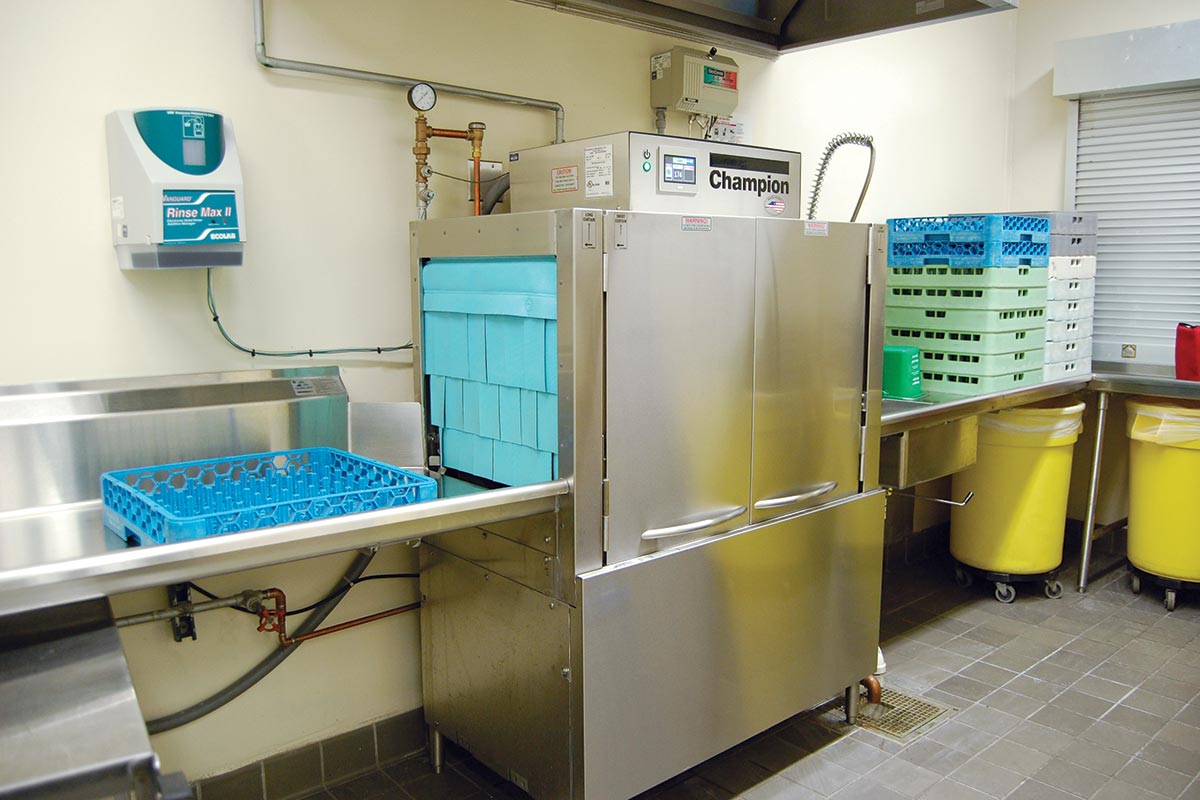
Improved Heat Recovery
All warewashers consume a lot of energy because they require water to be heated to a certain temperature: 180°F in high-temp models and 160°F in low-temp models. (Low temp models inherently use less energy but require chemical sanitizers to achieve the same results as high-temp machines.) Thanks to recent advances, however, rack-conveyor warewashers aren’t the energy hogs they once were.
For starters, newer models are better at harnessing heat to where it is needed. For instance, warewasher water that is 180°F should not be drained to avoid damaging pipes or flushing too much grease into the sewer. Newer warewashers include drain water energy recovery systems that repurpose drain water heat to the booster, which heats rinse water to proper sanitizing temperatures.
At least one newer rack-conveyor warewasher on the market features ventless heat recovery technology that operates on a cold-water feed, captures 100% of the operating exhaust heat and vapor and converts it into usable energy to heat the wash and fresh rinse water. “This can reduce hot water expenses by up to $5,000 a year,” according to the manufacturer. The technology also eliminates the need for a vent hood as the air placed into the dish room by the heat pump is cooled to below 70°F and its humidity reduced by 80%. “Without a vent hood, operators also can save over $7,500 on installation costs,” says the manufacturer. “Add that with the savings from lower hot water use and you have an attractive return on your investment.”
Features that improve the efficiency and heat recovery of ware washers also help with employee comfort in the dish room. For example, newer models with better insulated doors—constructed with either double walls or cell foam insulation—minimize heat loss while also reducing noise and keeping the exterior of the equipment cool to the touch.
Smarter Boosters
To improve efficiency, one maker has introduced a “smarter” booster heater to its high-temp rack-conveyor warewasher. Traditionally, warewashers use booster heaters in one of two ways: In some models, the booster heater kicks on whenever the tank’s water temperatures fall outside a certain range to ensure that the correct water temperature is always available, regardless of how much water the machine is demanding. “It’s inefficient during idle periods or when the machine is only seeing light duty, as the water will continuously be heated when it isn’t being consumed,” says the manufacturer.
In other models, the warewasher is equipped with a heat recovery system that heats cold groundwater using heat captured from the operation of the machine. The booster heater then brings that warm water to 180°F. This method has its shortcomings, as well: When the machine is first turned on (or after idle periods), there isn’t much heat to recover. Also, in cold seasons, the heat recovery system may not be sufficient to heat very cold groundwater. In both instances, the booster heater must work harder to raise the water temperature to 180°F.
The new smart booster avoids these issues by having enough energy to heat incoming cold groundwater up to sanitizing temperatures on its own, and then automatically regulating its output downwards as the machine’s heat begins to be recovered.
More Customization
The latest rack-conveyor warewashers also allow for more personalized operations. One manufacturer has come up with an adjustable rinse system that allows operators to choose between a low water rinse function that sanitizes dishwater, flatware, and glassware using only 0.35 gal. of water per rack, and a turbo rinse option, which increases the rinse consumption to 0.52 gal. per rack.
“This allows operators to choose the rinse performance based on the type of wares they are cleaning and the desired results they require,” says the manufacturer, adding that both rinse settings meet Energy Star requirements.
Some manufacturers also have introduced various blower options, depending on operational needs. Typically, one heated blower dryer unit comes standard and provides good drying results for most wares. But operations that need to wash melamine dishware or plastics such as trays and insulated items can opt for additional blower dryer zones.
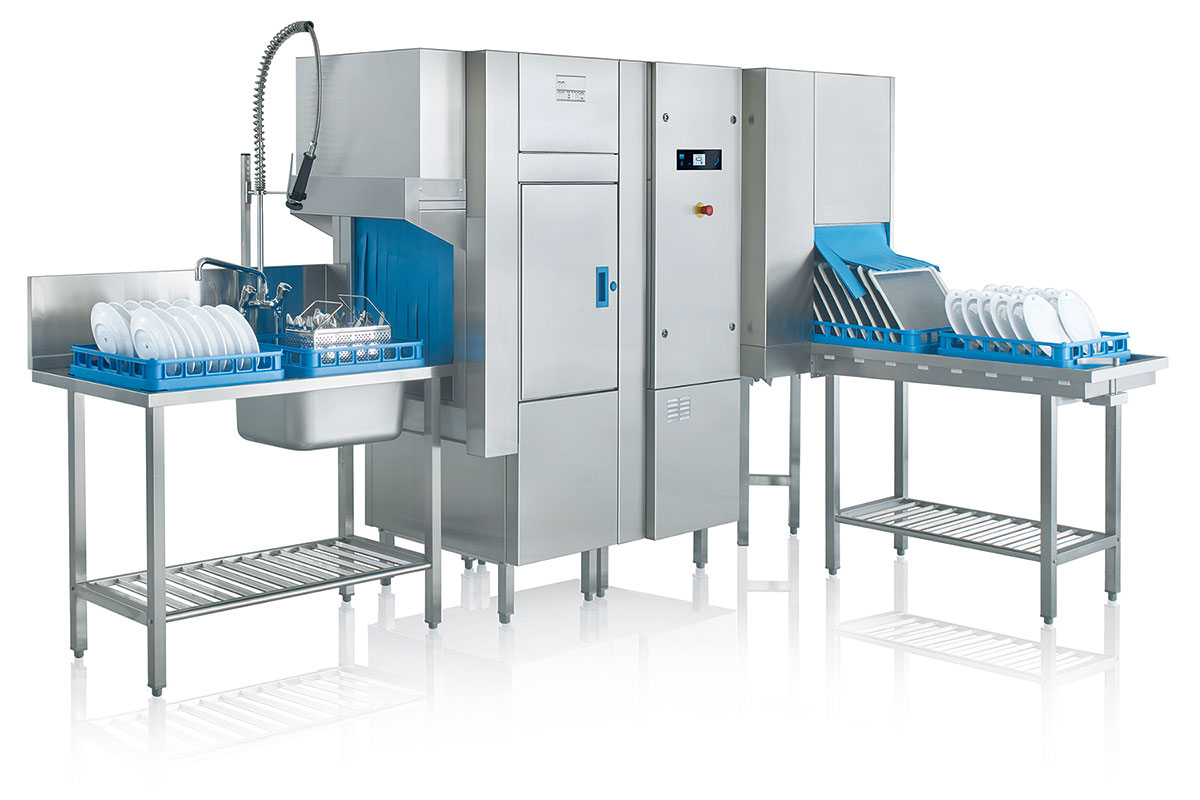
Labor Savings
Newer rack-conveyor warewashers also are incorporating touchscreen displays to aid in ease of use and maintenance. These offer the operator a real-time window to the operational information of the dishmachine including temperatures, warnings, service diagnostics as well as cleaning and operation manuals. Some models even feature key information in multiple languages to account for diversity of dishroom staff.
Additionally, one manufacturer has developed a warewasher with a continuous-motion drive system, in which all racks receive even cleaning as the conveyor is in motion 90% of the time. “By smoothing out the motion of the wares as they pass through—instead of quickly advancing and stopping—all wares receive the same time in the wash cycle, resulting in a consistently clean output,” says the manufacturer.
Another manufacturer incorporates an automatic soil removal feature that filters heavy food debris during the wash cycle so employees have to do less scraping before loading. The debris is then removed from the wash tank to an external basket where it can be easily emptied between washes. By keeping the wash water cleaner for longer periods of time, this feature cuts the amount of wash tank changes needed in half, reduces prescraping labor time up to 20% and saves up to $522 per year on water, energy and chemicals, says the manufacturer.
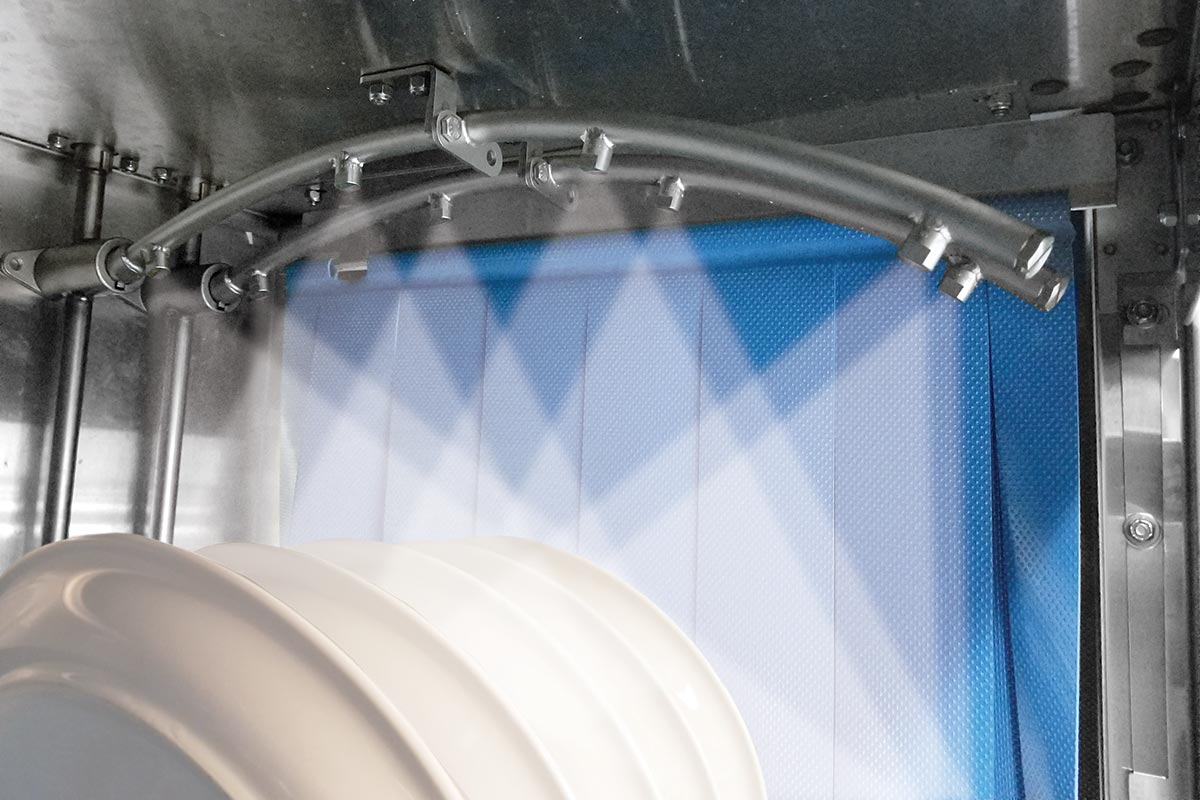
Temps and Tanks
The new features aside, it’s important to make sure you’re specifying the right kind of rack-conveyor ware washer for your operation. Consider these fundamentals:
Temperature. Warewashers come in low-and high-temp models. Low-temp models are typically more affordable to purchase, require less energy as a result of lower temperatures and generate less ambient heat and humidity in the dish room. Yet their lower temperatures mean operators also must purchase a chemical sanitizer, resulting in higher operating costs over time for what some manufacturers claim is a lower quality cleaning.
Under most circumstances, high temp models can offer more cost effectiveness over the life of the machine and offer better wash and sanitization results. They do require venting and HVAC considerations although newer high-temp models offer ventless capabilities.
Tanks. Rack-conveyor warewashers come in single- or multiple-tank models. By and large, the more wash tanks and the larger they are in size, the faster a machine can process dishes. Dishroom space may dictate specifying a single-tank model (44-in.W is the most popular), while an operation that produces a lot of food soil will want more than one tank to handle food debris.
“The 66-in. machine is the second most popular size,” says one manufacturer. “It’s a 44-in. Single tank with a 22-in. Prewash section, which is not considered a tank as it is not heated. This is more ideal for users who have heavy food soil and have a difficult time removing all the food in a prescraping process before the wares enter the machine.”
“A dish machine is purchased to do one thing and do it well over and over, and that’s simply to wash and sanitize dishes,” one manufacturer stresses. “While saving money can be good and spec sheet data can raise eyebrows, at the end of the day it’s all about whose dish machine washes dishes the best and lasts the longest, and remains reliable over the duration.”
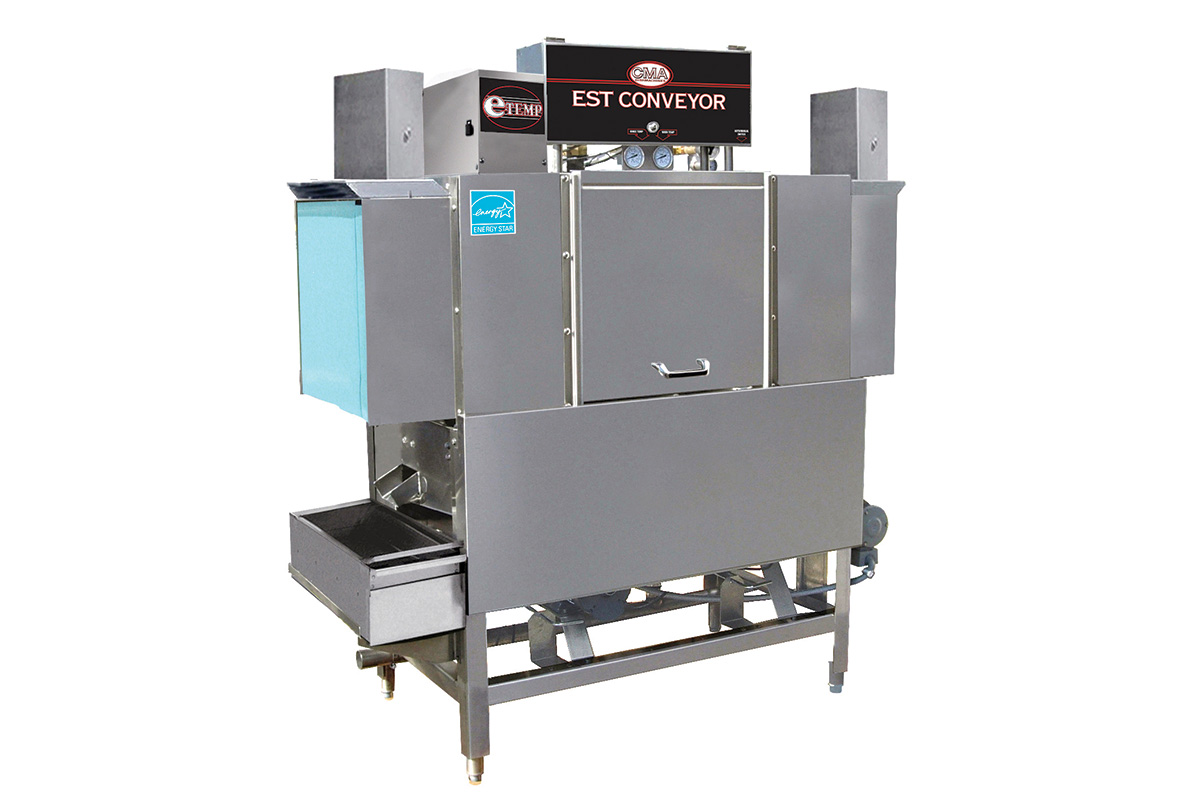
Common Mistakes to Avoid When Specifying
Manufacturers warn against the following oversights when shopping for rack-conveyor warewashers:
- Undersizing: “It’s always a good idea to buy a machine that has 15% to 30% more capacity than what you need at the time of purchase to allow for variations in dish flow, operator efficiency and types of food soil,” says one manufacturer. To find your operation’s required capacity (racks/hr.), take your peak number of wares per diner and divide that total by 20, the average amount of pieces that fit into a single rack.
- Skipping prewash: “The prewash removes food soil, which provides for better overall cleaning results and extends the useful life of the water and detergent in the wash tank,” says one manufacturer. This is especially true for facilities that serve breakfast items such as eggs and dairy, which respond better to cooler water during a prewash cycle. Prewash also is considered essential in healthcare and catering operations, where food soil has longer to dry onto the dishware before it’s washed.
Rack-Conveyor Gallery
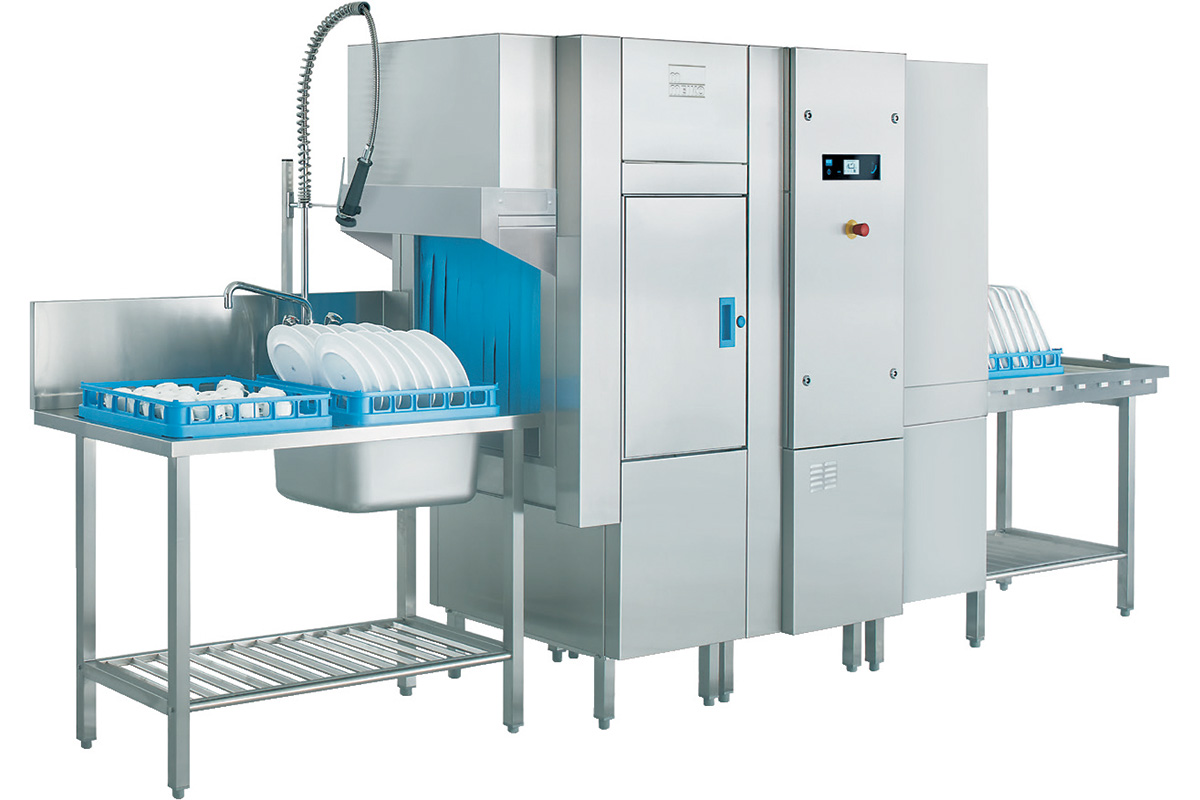
MEIKO KA SERIES
The KA Series features a glass touchscreen that provides information clearly, in plain text and graphics for simple, intuitive operation. Its wash arm spray pattern ensures effective coverage with varying angles and offset spray jets. The KA Series also features a built-in ″smart″ booster heater. Blue-colored components quickly indicate which parts are removable for cleaning. The KA Series is available in nine models to meet the exact needs of your facility.
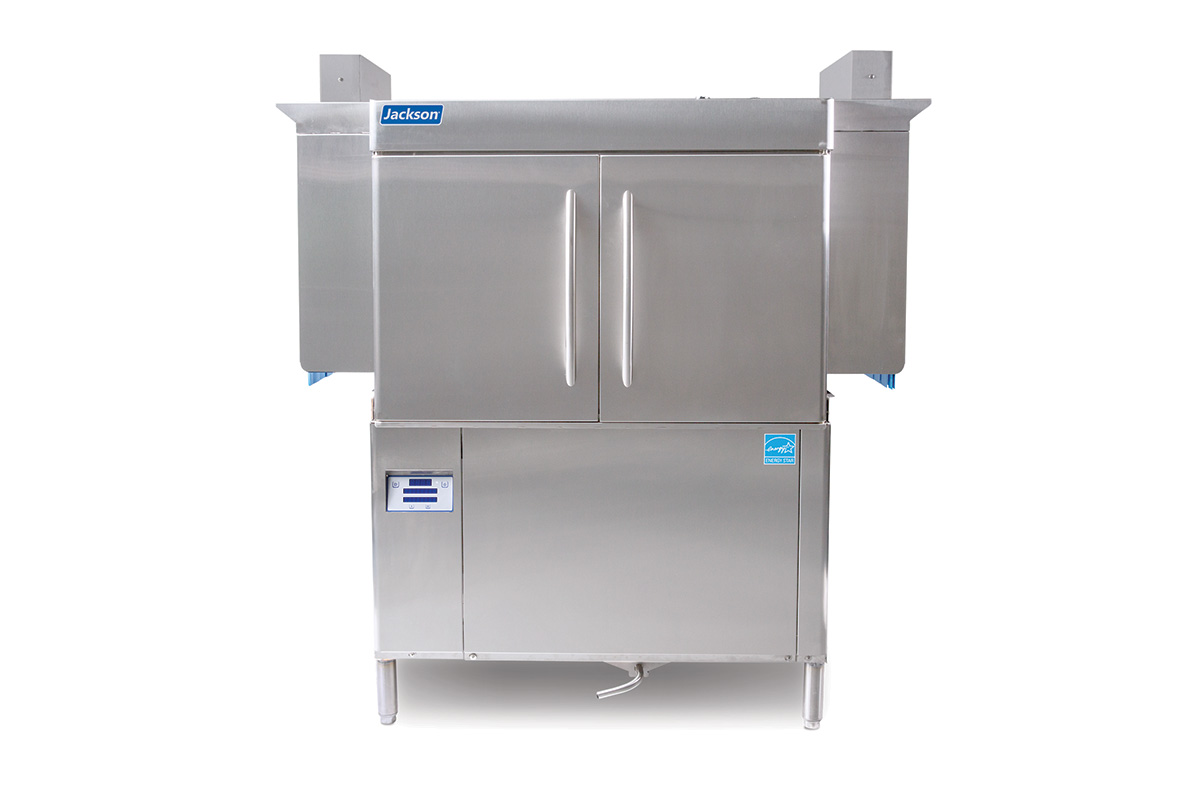
JACKSON RACKSTAR 44
JACKSON RACKSTAR 44
RackStar 44 by Jackson boasts an Adjustable Rinse System: select Econo Rinse, which uses only 0.35 gal. per rack and is suitable for normal operations, or Turbo Rinse, which uses 0.52 gal. per rack and is ideal for more heavily soiled loads. Other highlights include Rainbow Rinse with arched rinse arm design, self-cleaning wash arms and a digital LED control panel. Double-wall insulated doors retain heat, keeping wash water hot and generating less heat in the dishroom.
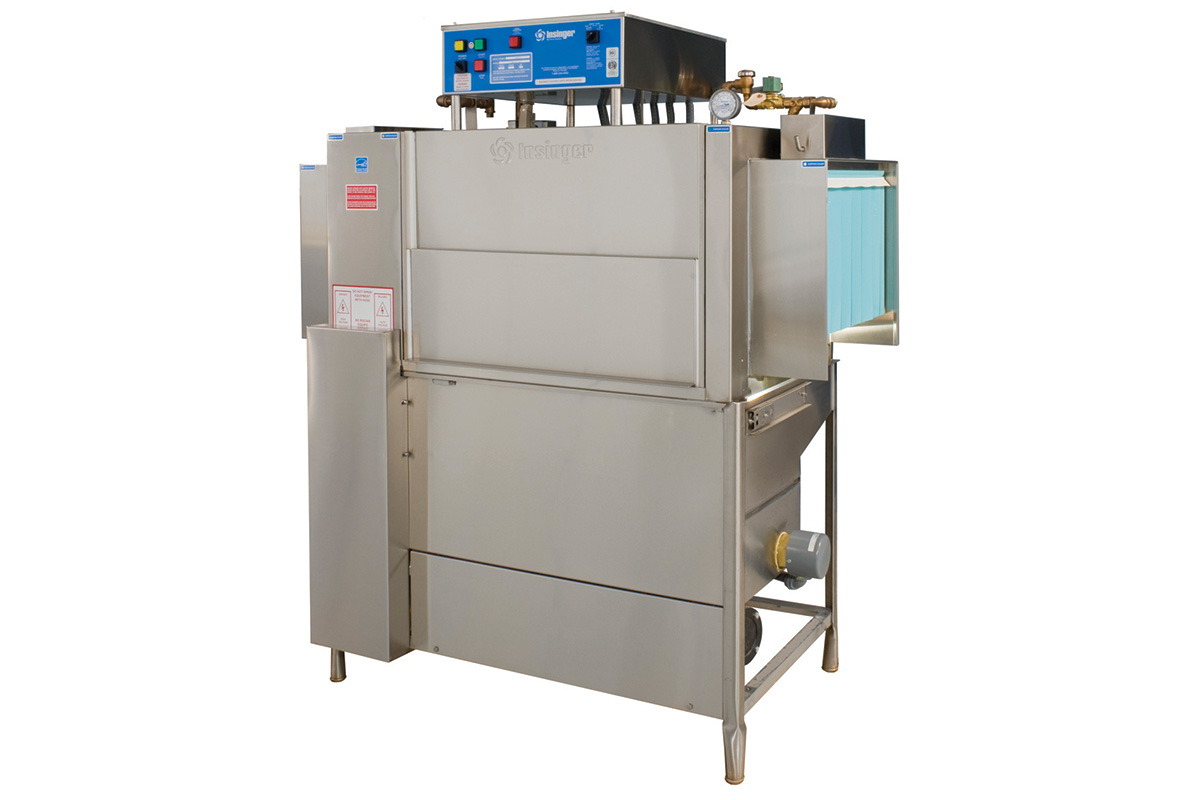
INSINGER ADMIRAL SERIES
Admiral Series dishwashers use the CrossFire Wash System, which power sprays water horizontally, as well as from above and below for superior cleaning action. Units offer low water consumption coupled with high rack capacities. Features that make service and maintenance simple include color-coded curtains, making replacement error-proof; wide doors to provide easy access into the interior of the machine and SureFire Start-Up & Check-Out Service to ensure optimal operation from the first pass.
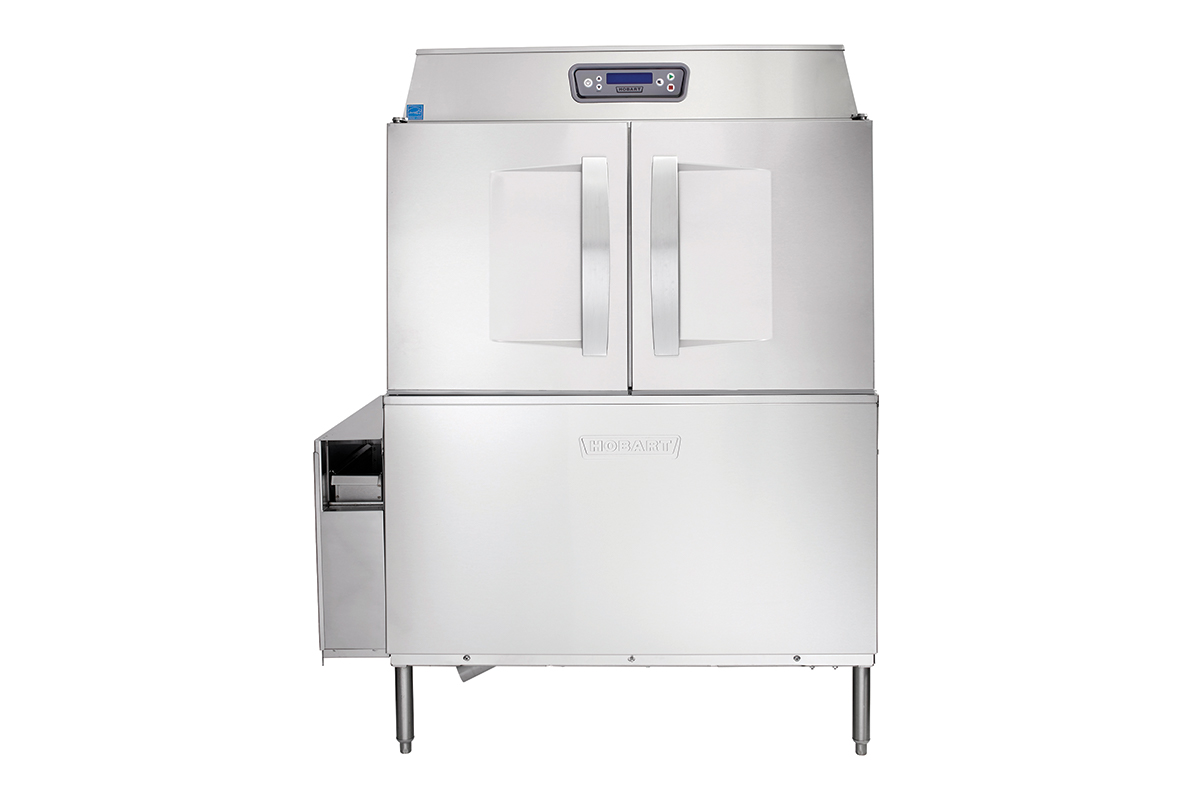
HOBART CLEN
Hobart’s Advansys CLeN series includes Drain Water Energy Recovery, which captures drain water heat to warm incoming cold water, reducing hot water consumption up to 90%. Automatic Soil Removal pumps food soil into an external basket, keeping wash water cleaner. The Programmable Delime Alert extends washer life and saves money on chemicals, while a configurable Pot & Pan Mode can extend wash times.
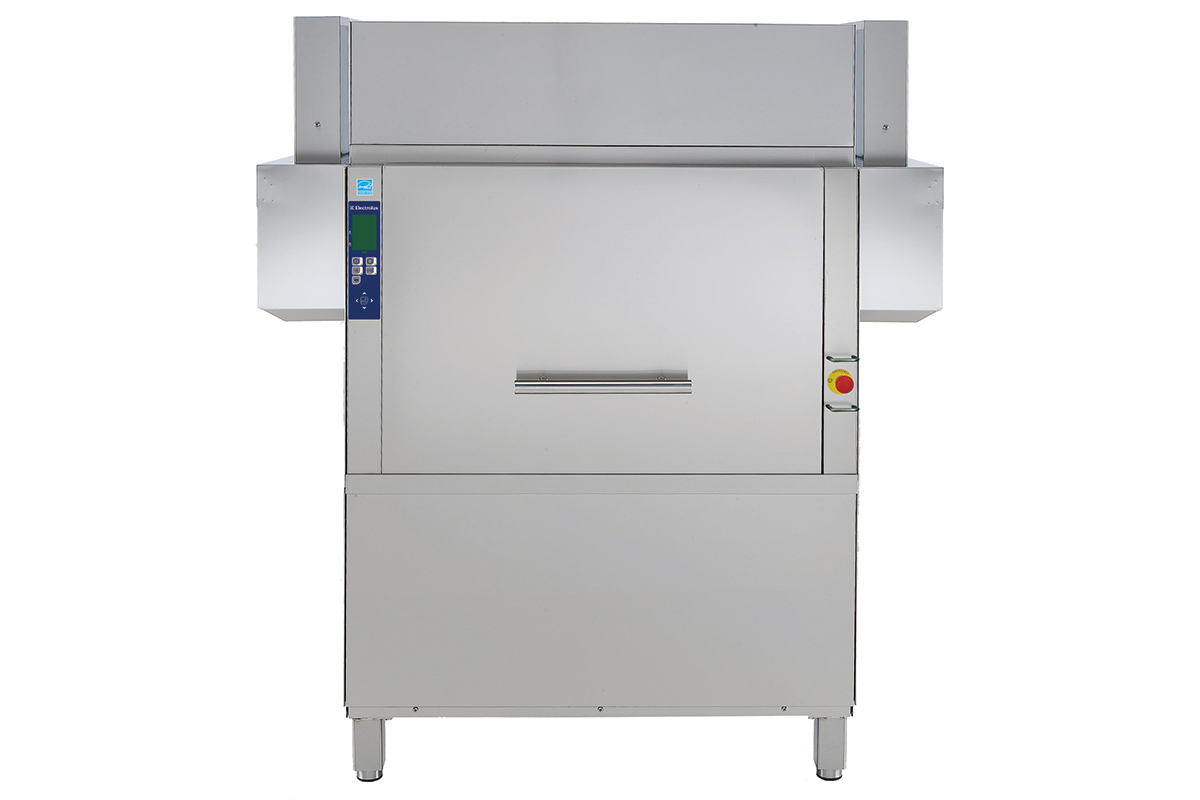
ELECTROLUX ECRT44 GREEN & CLEAN
This Energy Star-rated, single-tank conveyor dishwasher features Energy Saving Device and Wash-Safe Control. It boasts an atmospheric built-in booster system with built-in rinse booster pump, thus guaranteeing constant rinse pressure during the rinse cycle. Choose from two conveyor speeds, which employees can select from the control panel, for either 100-racks/hr. or 200-racks/hr. production capacity.
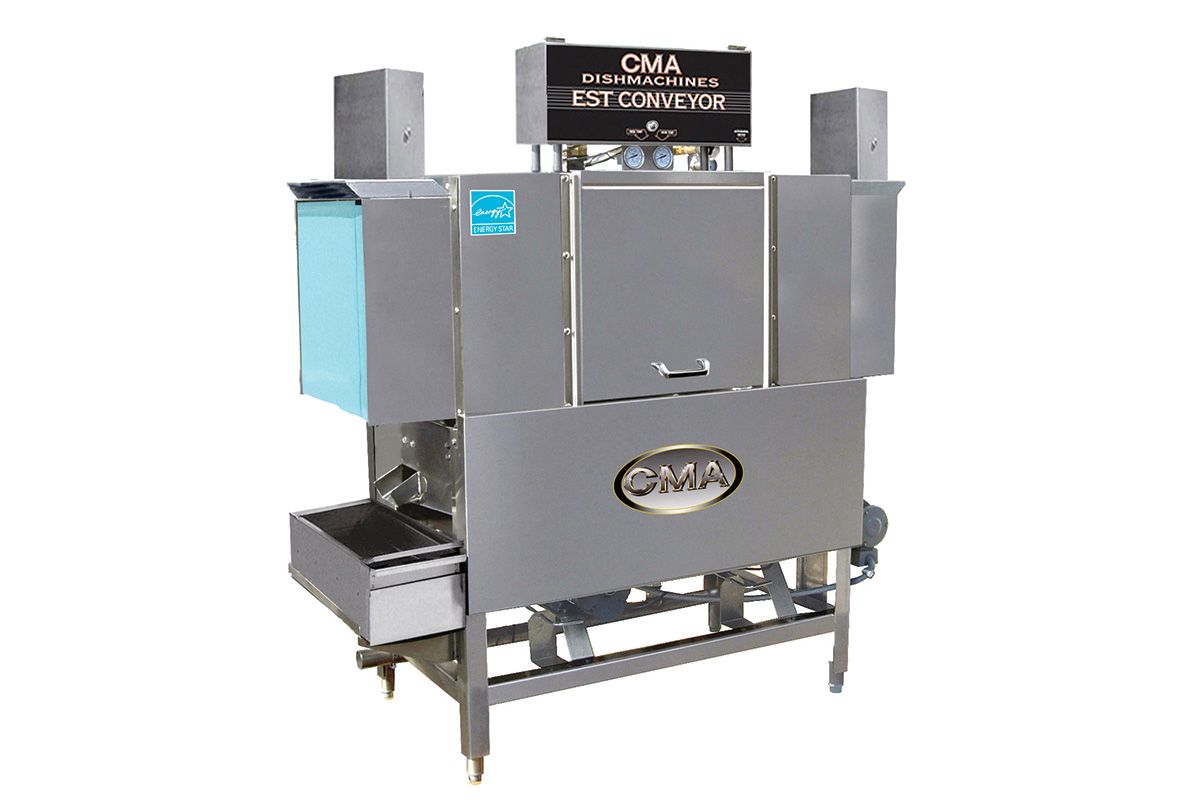
CMA EST-44
Take advantage of three separate washing functions (wash, power rinse and final rinse) all in a 44-in. space with CMA’s EST-44. Automatic soil purging system filters wash water and traps plate debris in an external tray, which is easily removeable for cleaning. Dishmachine features durable stainless construction for years of trouble-free operation. Automatic water-control system, single control switch activation and power rinse heater system all come standard.
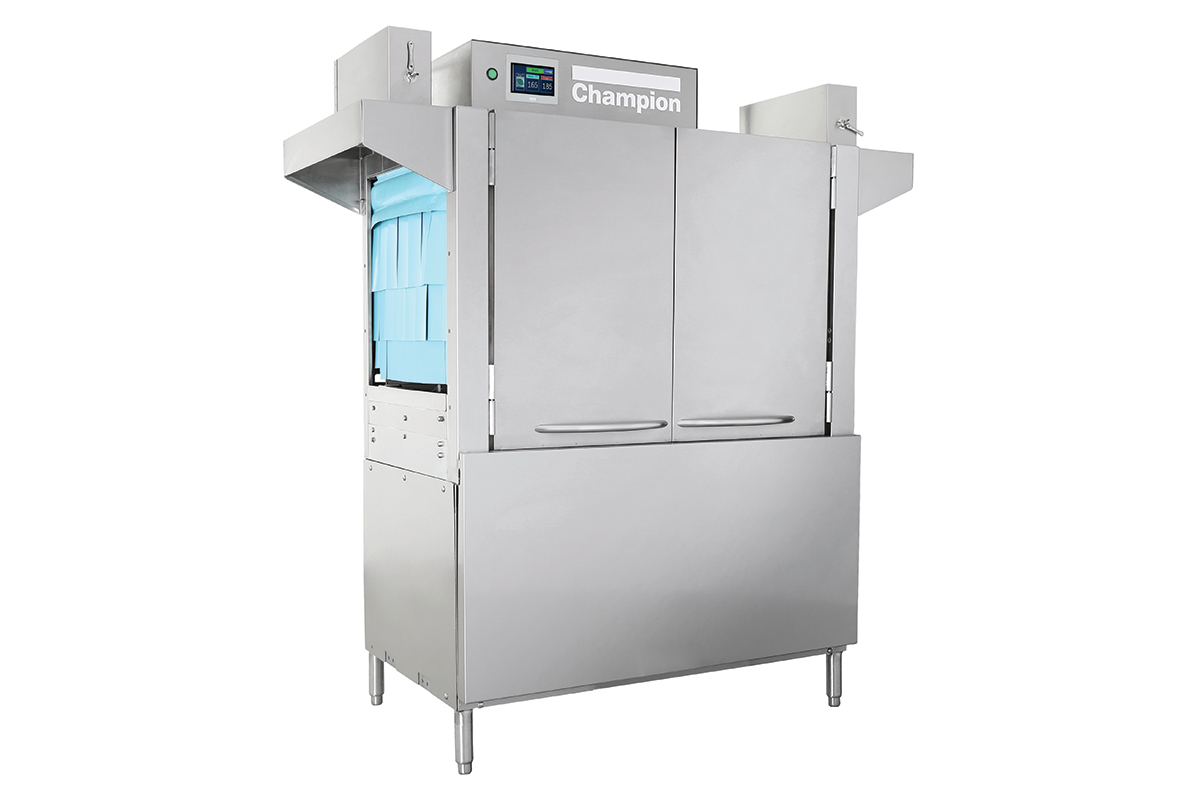
CHAMPION 44 PRO
Champion’s 44 PRO Series features a PROgressive drive system for near constant rack movement. PROactive jam-avoidance technology senses drive obstructions, stopping the drive to avoid damage to wares, racks and dishmachine. The PROportional rinse system yields 100% final-rinse water coverage. Top-mounted Prodigy-series Human Machine Interface control panel features touchscreen technology making the dishmachine easy to operate and troubleshoot. The 44 PRO VHR features ventless heat recovery.
RELATED CONTENT
- Advertisement -
- Advertisement -
- Advertisement -
TRENDING NOW
- Advertisement -
- Advertisement -
- Advertisement -

